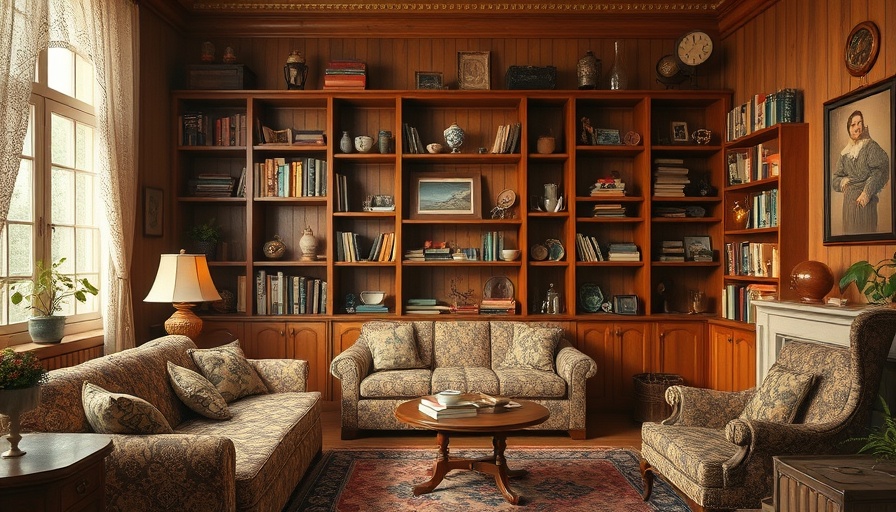
Understanding Vintage: A Timeless Appeal
In an age where modern decor often overwhelms the market, vintage home decor offers a breath of fresh air. While decorators, collectors, and homeowners across the nation turn to these unique pieces, a question frequently arises: what is considered vintage? According to experts, the term 'vintage' refers specifically to items that are at least 20 years old but less than 100 years old. This definition sets vintage apart from antiques, which are designated for objects that are 100 years old and older. Understanding this distinction is crucial for anyone looking to add layers of history and charm to their home.
The Allure of Vintage Decor
So, why are vintage pieces so appealing? For starters, they bring character and a bit of history into any space. Whether you're in Portland, Oregon, or New York City, vintage items can serve as conversation starters. As noted by interior designer Walter O’Neill, vintage items “reflect the spirit, craftsmanship, and design trends of their era.” The aesthetic value, combined with a rich backstory, transforms these pieces from mere objects into storytellers.
Vintage vs. Antique vs. Retro: What’s the Difference?
Many people often confuse vintage, antique, and retro, and rightly so; they all draw inspiration from the past. However, the differences are rooted in age and design intent:
- Antiques: Typically defined as items that are 100 years old or older.
- Vintage: Encompasses items that range from 20 to 99 years old.
- Retro: Refers to new products inspired by previous eras' styles.
As Dave Garcia aptly summarizes, retro is a reimagining of past aesthetics rather than a direct link to history like vintage and antiques provide.
How to Identify Quality Vintage Decor
When you're on the hunt for vintage items, consider their quality and condition. Look for durable materials such as solid wood, metals, or textiles that have stood the test of time. Inspect details like craftsmanship, which often signify a well-made piece worth investing in. A well-preserved vintage item not only enhances your decor but can also hold or increase its value over time.
The Rise of Vintage Markets
With the growing interest in sustainability and individual expression, vintage markets and shops have flourished across the U.S. Events like flea markets and vintage fairs provide a plethora of options, making it easier for enthusiasts to find unique items. Each piece brings a story, contributing to a sense of community among collectors and designers alike. Whether you’re visiting a local flea market in Baltimore or browsing through online vintage shops, the excitement of discovering unique decor is unparalleled.
Embracing Vintage in Your Home
Incorporating vintage decor into your home doesn’t require a complete overhaul. Consider mixing vintage pieces with contemporary furniture for contrast. A vintage lamp on a modern desk or a classic chair alongside a new sofa can harmoniously blend different eras while showcasing your personal style. It's all about finding the right balance.
As you embark on your vintage journey, familiarity with these terms and their meanings will enrich your decorating experience. Vintage decor isn't merely a trend; it's a celebration of artistry, craftsmanship, and stories from days gone by.
If you're ready to transform your living space with unique vintage decor, consider exploring local vintage shops or online marketplaces today.
 Add Row
Add Row  Add
Add 




 Add Row
Add Row  Add
Add 

Write A Comment